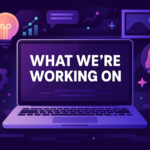Understanding AI: What It Is, How It Works, and Where It’s Headed
Artificial Intelligence, often shortened to AI, has moved far beyond the pages of science fiction novels. Today, it’s baked into everyday experiences, whether you’re using a ride hailing app, watching a movie recommendation, or chatting with a customer service assistant online. As AI becomes more common, it’s also becoming more essential to understand what it really is, how it functions behind the scenes, and where it’s going next.
This guide will break it all down in a way that’s digestible but detailed, useful whether you’re a tech beginner, a curious creator, or someone building the next generation of online tools.
What is Artificial Intelligence?
Artificial Intelligence refers to machines or software systems that can carry out tasks typically associated with human intelligence. This includes things like recognizing voices, understanding natural language, making decisions based on data, and even generating content like writing or artwork.
The key distinction between traditional software and AI is that AI systems can adapt and improve based on the data they process, rather than just following rigid prewritten rules.
The most common type of AI people interact with is called narrow AI. These are systems that do one thing really well, like filtering spam emails or recommending products on Amazon. They’re not conscious or self aware, but they can still perform incredibly complex tasks.
Core Types of AI and Their Purpose
Narrow AI
Built for one task or domain, narrow AI is everywhere. Siri, Google Translate, and Netflix’s recommendation engine all fall into this category.
General AI (AGI)
Also known as Artificial General Intelligence, AGI would be capable of understanding and reasoning about the world across any topic, much like a human. It’s still theoretical.
Superintelligent AI
A concept involving AI far surpassing human intelligence. While speculative, it plays a large role in discussions around AI ethics and safety.
How AI Systems Actually Work
Understanding how AI works can make the whole idea feel much less mysterious. At the core, every AI system goes through four main steps:
- Data Collection – Gathering written text, images, videos, or behavioral data.
- Training – Algorithms analyze the data to find patterns and relationships.
- Model Creation – The system becomes a trained model, ready for use.
- Inference – The AI takes new input, applies what it learned, and produces an output.
Why Training Data Shapes AI Decisions
One of the easiest ways to understand how AI works, and where it can go wrong, is to look at how a Tesla learns to recognize a stop sign. There’s no hardcoded rule in the car’s software that says “this shape, with these letters, means stop.” Instead, the AI is trained on thousands of examples of stop signs, from different angles, lighting conditions, and contexts. The car’s neural network picks up on patterns across these examples to make predictions about what a stop sign looks like and when to stop.
But here’s the catch: AI doesn’t just learn the visuals. It can also learn human behavior. If most drivers roll through stop signs instead of making a full stop, and that’s what the AI sees in its training data, it may learn to mimic that behavior. That’s where the importance of data curation comes in. The quality of AI output is only as good as the examples it learns from. If the training data is biased, inconsistent, or flawed, the AI will be too.
This is why companies building self-driving technology and other AI driven systems need to be extremely intentional about what data they use, how it’s labeled, and what behaviors they want the AI to emulate. It’s not enough for the AI to be smart, it has to be taught well.
Common Technologies Behind AI
Machine Learning (ML)
Enables software to learn from data without being explicitly programmed.
Deep Learning
A subset of ML that uses neural networks, helpful for speech recognition and visual data.
Natural Language Processing (NLP)
Helps machines understand and generate human language. Powers chatbots, translation apps, and summaries.
Computer Vision
Allows machines to interpret visual information, useful in photography, surveillance, and more.
Reinforcement Learning
AI learns by trial and error, receiving rewards or penalties. Often used in robotics and games.
Where AI Is Used in the Real World
- Search Engines – Personalize and rank results
- Finance – Fraud detection, credit analysis, trading
- Healthcare – Medical imaging, diagnosis, drug research
- Retail – Customer service bots, pricing, inventory
- Creative Tools – Content writing, visual generation, music creation
- Security – Surveillance, threat detection
Challenges and Concerns with AI
Bias in Training Data
If AI is trained on biased data, it can replicate and amplify those biases.
Privacy
AI systems often require large amounts of data, raising concerns around how personal information is stored and used.
Job Displacement
AI could replace some repetitive or manual jobs, though it may also create new ones.
Misinformation
Deepfakes and AI-generated content can spread false information more easily.
Control and Regulation
As AI becomes more powerful, guiding its development in ethical directions is increasingly important.
What the Future of AI Might Look Like
Looking ahead, AI will be even more embedded in daily life. Instead of being a separate tool, it will be integrated into phones, vehicles, workplaces, and creative tools.
AI will:
- Help personalize education
- Automate logistics and supply chains
- Support real-time creative collaboration
- Power adaptive digital platforms and experiences
Some platforms are already preparing by building smarter infrastructure that responds to user behavior and needs in real time. This means not just adding AI features on top, but making them part of the way communities grow, conversations flow, and creative work happens.
Final Thoughts
Artificial Intelligence is not coming, it’s already here. It’s transforming how we communicate, create, shop, and work. Understanding how it works, and how it can be used well, is essential.
The most successful platforms and creators will be the ones that use AI thoughtfully, integrating it in ways that enhance experience without replacing intent.



